 And it’s not good news. Victoria just filled her tank and the verdict is …… 15 mpg. Crap!!!!!
And it’s not good news. Victoria just filled her tank and the verdict is …… 15 mpg. Crap!!!!!I’ve submitted a post to the Corvair Center Forum hoping someone can shed some light on this issue. I still need to more closely check for gas leaks.
 And it’s not good news. Victoria just filled her tank and the verdict is …… 15 mpg. Crap!!!!!
And it’s not good news. Victoria just filled her tank and the verdict is …… 15 mpg. Crap!!!!!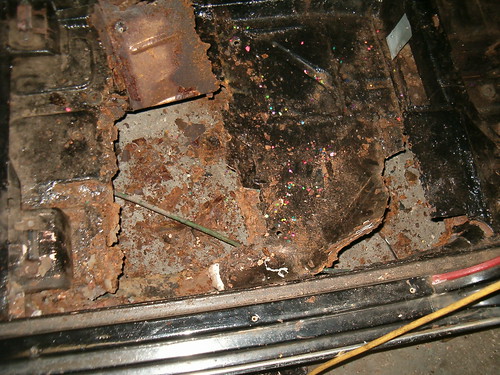
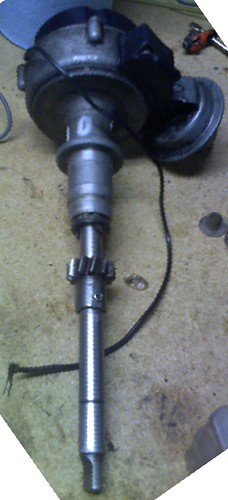
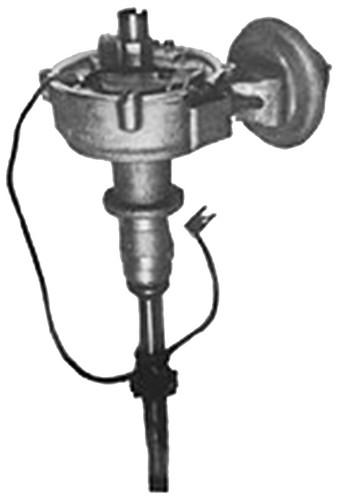

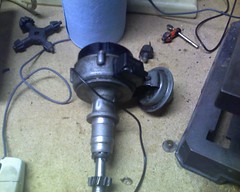
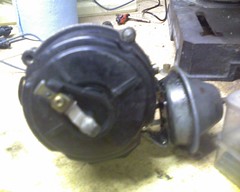
 I was out in the garage a couple evenings last week trying to complete the rebuild of Glinda’s distributor. I got the new oilite bushing pressed into the housing easily enough, but the next step stymied me. The cam (18), after being pressed over the end of the shaft, would not turn freely. After some online assistance and very close inspection, I discovered the end of the shaft (circled) had been dinged. I chucked the shaft into my drill press and filed a small chamfer onto the end. With shaft spinning, I also took some emory cloth and polished the cylindrical surfaces. Lo and behold, the cam plate would now turn freely after installation.
I was out in the garage a couple evenings last week trying to complete the rebuild of Glinda’s distributor. I got the new oilite bushing pressed into the housing easily enough, but the next step stymied me. The cam (18), after being pressed over the end of the shaft, would not turn freely. After some online assistance and very close inspection, I discovered the end of the shaft (circled) had been dinged. I chucked the shaft into my drill press and filed a small chamfer onto the end. With shaft spinning, I also took some emory cloth and polished the cylindrical surfaces. Lo and behold, the cam plate would now turn freely after installation.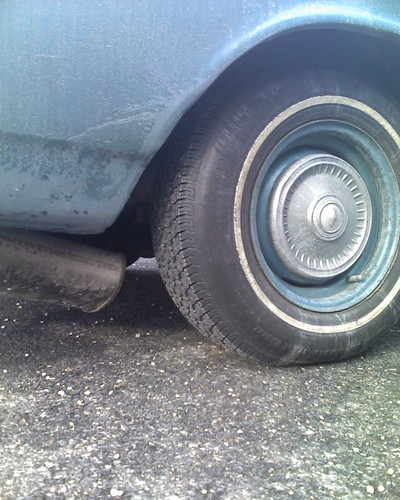 A few days back I got a phone call from Victoria informing me that Glinda’s muffler had come loose from the exhaust pipe again. It wasn’t dragging, but the car was certainly much louder. I had not yet gone into work, so I packed my thermal coveralls, knit cap, baling wire, and wire cutters into the Suburban and drove to the school parking lot. As a temporary fix, I slid the end of the muffler pipe over the exhaust pipe and retained it by wiring the pipe clamp to the car body. She made the drive home without issue. The next day it was too cold to work on the car, but Victoria drove it anyway. By the time she’d returned, my temporary fix had failed.
A few days back I got a phone call from Victoria informing me that Glinda’s muffler had come loose from the exhaust pipe again. It wasn’t dragging, but the car was certainly much louder. I had not yet gone into work, so I packed my thermal coveralls, knit cap, baling wire, and wire cutters into the Suburban and drove to the school parking lot. As a temporary fix, I slid the end of the muffler pipe over the exhaust pipe and retained it by wiring the pipe clamp to the car body. She made the drive home without issue. The next day it was too cold to work on the car, but Victoria drove it anyway. By the time she’d returned, my temporary fix had failed.